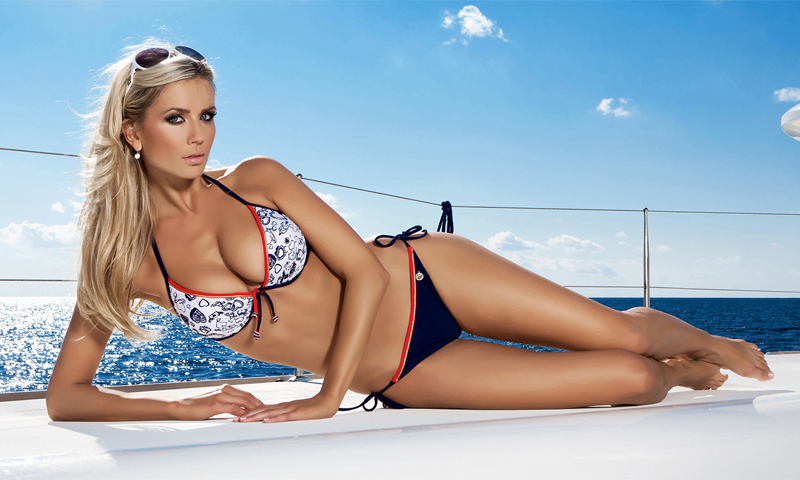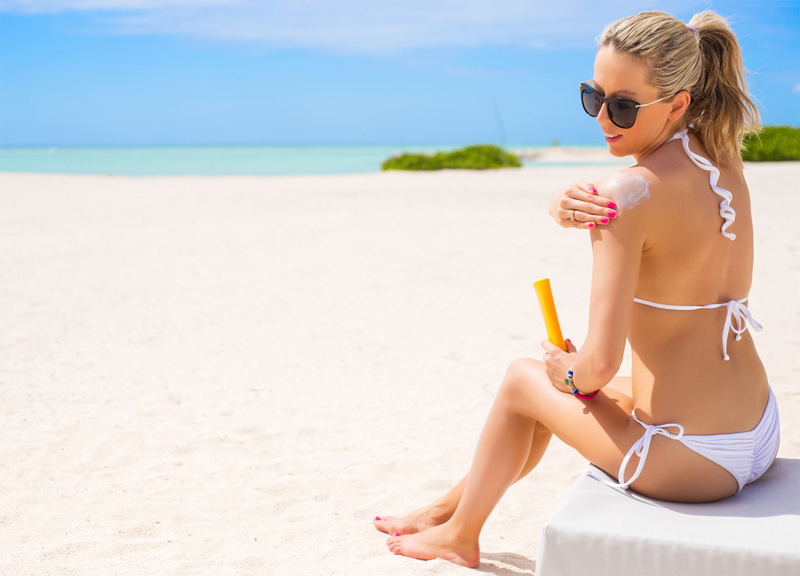Under the influence of UV rays in the human body, vitamin D is produced. But it should be remembered that UV radiation can bring both benefit and harm. Sunscreens help prevent burns, photoaging of the skin and the appearance of premature wrinkles. How to choose a sunscreen, you will learn in this article.

Contents:
- The best manufacturers of sunscreens
- The principle and structure of sunscreen
- Types of sunscreens for sunburn
- Options for choosing sunscreen
- What sunscreen to choose
- How much does sunscreen for sunburn
? The best manufacturers of sunscreens - which company to choose
Sunscreens should provide effective protection against harmful effects of ultraviolet light. Before choosing a tool, pay attention to the manufacturer, becausenot all companies produce high-quality products.
The following companies have the most stringent requirements for the quality of their products:
- L`OREAL
- Vichy
- Nivea
- Hikari
The products of these brands are distributed all over the world.have long won the trust of buyers. This is not surprising, because the products are developed by professionals in the field of health: dermatologists, nutritionists and other professionals.
Thanks to cooperation with doctors and pharmacists, brands use technologies from the field of medicine. Before the sale, the goods undergo multiple clinical trials to confirm safety and quality.
In our rating of the best sunscreens, you can find out what means are distinguished by excellent quality.
Principle of operation and structure of sunscreen

Ultraviolet radiation can be of 3 kinds: UVA, UVB, UVC.The last rays are very harmful to humans, fortunately, they are absorbed by the atmosphere and do not reach the surface of the Earth. But rays A and B affect the body, but in different concentrations.
Only 5% of UVB rays reach the Earth, however, with prolonged sun exposure, this amount may be sufficient to cause serious damage to the skin( up to the mutation of tissues and, as a consequence, oncology).
95% of UV radiation represents UVA rays. They surround us constantly, create a tan on the skin, with prolonged exposure lead to hypersensitivity, photo-aging of the skin( wrinkles, loss of elasticity).
Given such exposure to the skin, dermatologists strongly recommend the use of sunscreens that protect the skin from burns. The presence of a sunscreen factor does not prevent the skin from acquiring a darker shade. The process of sunbathing will be less intense than without using a cream, however it is safer.
As a part of the funds there are usually special substances that neutralize the action of ultraviolet rays of spectrum A and B - UV filters.
The following types of UV filters are distinguished:
1. The physical create the screen, preventing the rays from penetrating into the deeper layers of the skin( titaniumdioxide, zincoxide, various siloxanes).
2. Chemicals penetrate the skin and convert solar energy into thermal energy( benzoquinones, salicylic acid ethers, etc.).
The sun protection factor( SPF) is always indicated on the packaging of any sunscreen. Values can be from 4 to 50. They denote the level of protection of the cream from exposure to harmful sunlight: the higher the index, the higher the protection. You can find products on which the SPF is above 50 - it's nothing more than an advertising move.
Types of sunscreens for sunburn
For very light skin

These creams provide intensive protection from the sun. They include funds with SPF 35-50. They are suitable for people who are sunbathing with difficulty and do not tolerate prolonged exposure to the sun, becausethe skin quickly burns and becomes blistered. Usually such people have light or red hair, pale skin color, sometimes freckles, an expanded capillary network.
Pluses:
- instantaneous skin protection against premature aging and burns;
- cream prevents dryness and peeling of the skin;
- protect skin areas with pigment and birthmarks.
Disadvantages:
- after 2 hours the cream must be reapplied;it has the property of being washed off when it comes in contact with water, sand or a towel;
- agents sometimes leave a white coating;have a thick consistency, which is not absorbed immediately;
- re-application does not extend the duration of the protective effect.
For light skin

This category includes cream with SPF 25-35.Means suitable for people whose skin tans slowly and quickly burns with prolonged exposure to the sun, hair has a light tint: light brown, golden, wheat, etc.
Advantages:
- prevention of early skin aging;
- cream stimulates the appearance of a natural tan;
- levels the skin tone;
- provide opacity, high prevention of photoaging.
Disadvantages:
- in large quantities of cream may cause irritation on the skin;
- tools usually have a dense texture.
For normal skin

This category includes products with SPF 15-25.They have an average degree of protection and have tonic and regenerating properties. The cream is suitable for people with dark hair color, slightly dark skin, which tans well.
Advantages:
- funds contribute to the acquisition of a smooth, natural tan without burns;
- provide the optimum level of protection in sunbathing;
- usually the texture of such creams is not thick, easily absorbed and leaves no traces;
- neutralize the damage of ultraviolet radiation, prevent harmful radiation from entering the deep layers of the skin.
Disadvantages:
- cream should be rinsed a few hours after application.
For dark skin

SPF in these creams is 4-15.The products provide an easy protection and maintain the elasticity of the skin. The cream is perfect for dark people with dark hair, eyes and skin, which almost never burns, even with prolonged exposure to the sun.
Advantages:
- cream stimulates the appearance of a natural tan;
- prevent skin drying, premature aging;
- light texture;
- protect the skin from the harmful effects of ultraviolet radiation.
Disadvantages:
- is not recommended for use in the case of individual intolerance to individual components of sunscreen.
Sunscreen selection parameters

Level of protection against UV rays
This is the main parameter for selecting sunscreen. The lighter and more sensitive the skin, the higher the level of protection. The same applies to mature skin, which tolerates solar radiation less than the young one, so it is recommended to strengthen the protection at an older age.
When choosing the SPF level, consider:
1. The duration of exposure to sunlight. People who are exposed to prolonged exposure to the sun require increased protection, so the SPF level should be at least 30;
2. UV index. The higher this parameter in your region, the more intensive protection will be required. You can find out the value of this parameter in any smartphone when viewing the weather forecast.
Filter type
On the packaging the manufacturer must specify the type of sun rays from which the cream protects. The most effective means will be that which protects simultaneously from several types of rays: UVA, UVB.Also protection from UVA rays is sometimes labeled as IPD, PA + or PPD.
Additional substances
It is better to choose a cream, in which there are vitamins B, C, A, F. They promote intensive moistening of the skin and have an antioxidant effect. Sometimes creams can contain alcohol to reduce the fat content of the texture.
It is known that alcohol dries heavily on the skin, so after application, a feeling of tightness may appear, so that this does not happen, choose a cream without alcohol or its minimum content.
In addition, the cream may contain the following undesirable components that adversely affect skin cells:
1. Oxybenzone;
2. Retinylpalmitate;
3. Parabens.
Consistency
The cream should be quickly absorbed and not leave a greasy shine, so the remedy should not be very thick and not very liquid.
Water resistance
With increased sweating or if it is planned to swim better choose a waterproof cream, so.the effect of the product will be preserved after exposure to water, no need to re-apply the cream after 15-20 minutes.
Hypoallergenicity
The presence of this parameter indicates that the cream has undergone multiple clinical trials for an allergic reaction and after its application there will be no burning, dryness, irritation and skin rash.
Which sunscreen to choose

1. Dermatologists recommend having a few sunscreens. While the skin is not sunburnt, you should get a cream with SPF of at least 30. When tanning, it is better to switch to cream with SPF 15. For those who wish to avoid premature skin aging, it is better to buy a cream with SPF of at least 30.
2. If the sun's raysfor some reason, are contraindicated( the passage of aggressive cosmetic procedures, hormone therapy, hyperpigmentation, etc.), then in the summer period a constant intensive protection is needed, so you should choose a cream with SPF30-50.
3. For daily use before a walk, a cream with SPF 5-20 is enough.
4. For children's skin, more intensive protection is required than the adult skin, becauseit is particularly susceptible to the negative effects of the sun. To prevent burns and maintain the health of the baby's skin, you should choose a cream with SPF 40-50.
5. As for the filters, the more they are present in the sunscreen, the more skin will be protected. If a person wants to get a quick, intense tan, then you should choose a cream with UVB protection. If the safety of sun exposure is the first place, it is better to purchase a cream with protection from UVB and UVA rays. The latter ones should also be purchased if the skin is tender and prone to irritation. However, it should be remembered that chemical filters become harmful after 2 hours after application, therefore it is recommended to completely clean the skin and apply a new layer of cream.
6. For sensitive skin prone to allergies and dryness, it is better to purchase hypoallergenic creams with various vitamins, which in addition to the protective effect, have a soothing, moisturizing effect.
7. To prevent the product from washing off in water, it is better to purchase a waterproof cream.
How much does sunscreen for sunburn

Cost of creams depends on several factors:
1. Components that make up the product.
2. Manufacturer company.
Well-known brands often overstate the value of their goods, but you can find funds from lesser-known companies, whose cream is not inferior in efficiency and cost an order of magnitude cheaper, but it's worth remembering that a quality product will not cost very cheaply.
The cost of sunscreens for sunburn varies in the limit of 100-14000 r. If the composition of cosmetics is close to natural, does not contain harmful impurities, is enriched with vitamins, the price will not be the lowest.


